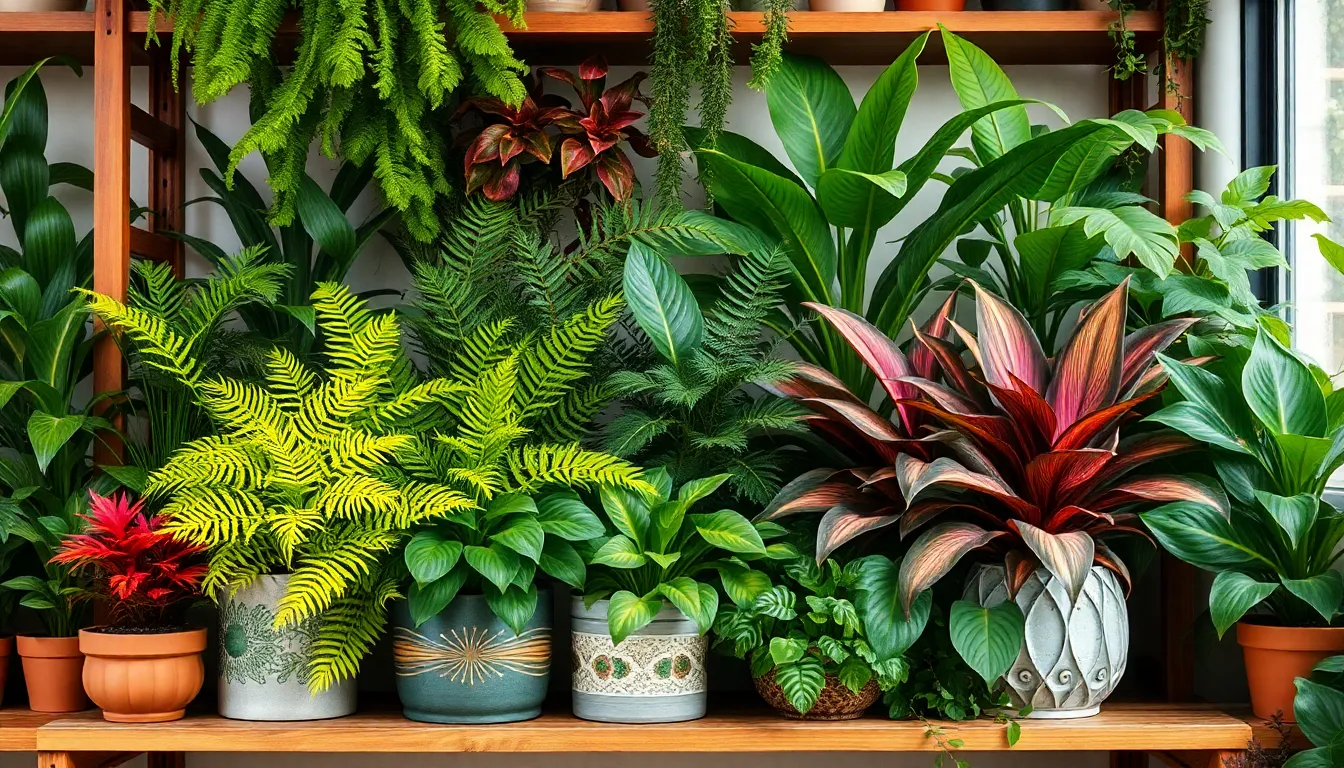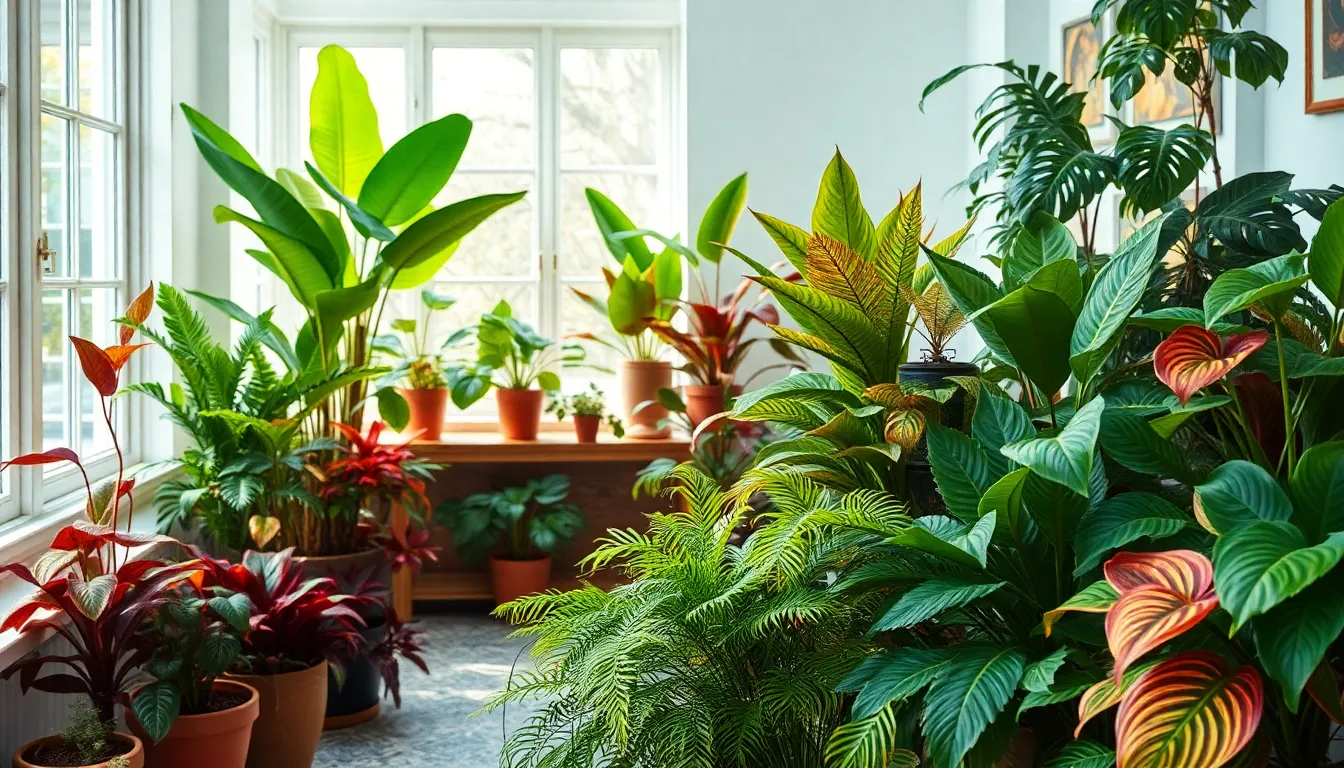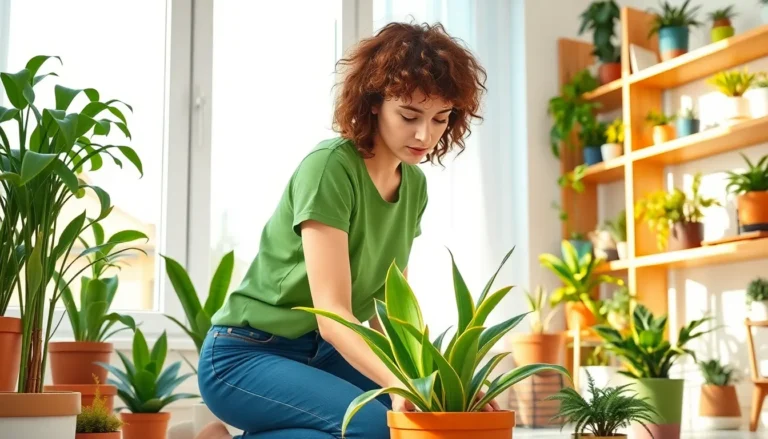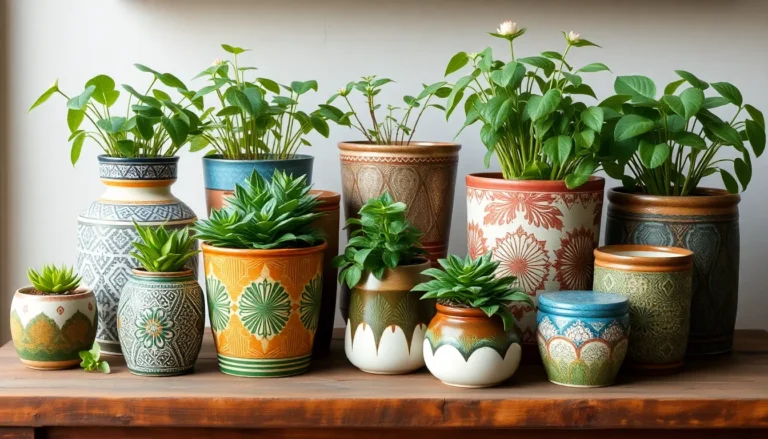When it comes to gardening, not all plants are created equal. Some thrive in the sun like they’re auditioning for a solar-powered reality show, while others prefer to bask in the moisture like they’re on a tropical vacation. Enter moisture-loving plants—the unsung heroes of the plant world that turn even the driest corners of your home into a lush paradise.
Table of Contents
ToggleWhat Are Moisture-Loving Plants?
Moisture-loving plants thrive in humid environments and possess unique adaptations for water retention. These plants prefer consistently damp soil and elevated humidity levels, distinguishing them from drought-tolerant varieties. They often inhabit natural ecosystems, such as wetlands and rainforests, where moisture levels remain high.
Common examples include ferns, calatheas, and peace lilies. Ferns exhibit lush foliage and resilient fronds, making them suitable for indoor settings. Calatheas offer vibrant patterns and can signal humidity needs through leaf movement. Peace lilies showcase beautiful blooms and improve indoor air quality while requiring regular watering.
Identifying moisture-loving plants involves observing specific traits. Thick, glossy leaves often indicate a plant’s ability to retain moisture. Additionally, a preference for indirect light frequently characterizes these species, aligning with their native habitat conditions.
Caring for moisture-loving plants demands attention to soil moisture levels. Maintaining slightly damp soil serves as the key to preventing stress and promoting growth. If humidity drops significantly, using a humidifier or pebble trays can restore the ideal environment.
Overall, incorporating moisture-loving plants into home decor adds vibrancy and promotes a healthier atmosphere. They provide an excellent opportunity to enhance indoor spaces while creating a harmonious balance with nature.
Benefits of Growing Moisture-Loving Plants


Moisture-loving plants provide several benefits that enhance indoor environments. Their lush foliage creates an inviting atmosphere.
Enhancing Aesthetic Appeal
Incorporating moisture-loving plants improves visual interest in any space. Varieties like ferns and calatheas display vibrant hues and intricate leaf patterns. These plants add texture and depth, transforming dull corners into focal points. Arranging different species together creates layers, amplifying their beauty. This diversity enriches home decor, making interiors feel more vibrant and alive.
Improving Air Quality
Moisture-loving plants also contribute significantly to indoor air quality. They filter harmful toxins and purify the air, promoting healthier living spaces. These plants increase humidity levels, which helps mitigate dry air concerns. Improved humidity reduces respiratory discomfort and skin dryness. By incorporating plants like peace lilies, individuals experience cleaner, fresher air, enhancing overall well-being.
Types of Moisture-Loving Plants
Moisture-loving plants encompass both aquatic and terrestrial varieties. These species thrive in water-rich environments, displaying unique adaptations for optimal growth.
Aquatic Plants
Aquatic plants flourish in water bodies, including ponds and lakes. Species like water lilies, duckweed, and anacharis showcase stunning beauty while providing vital habitats for aquatic life. Water lilies feature large, floating leaves and vibrant flowers, enhancing any pond’s visual appeal. Duckweed remains a common choice for surface cover, offering shelter and maintaining water quality. Anacharis grows submerged, facilitating oxygenation and supporting fish populations. These plants not only beautify water gardens but also contribute to balanced ecosystems.
Terrestrial Plants
Terrestrial plants favor consistently damp soil, thriving in humid environments. Varieties like ferns, calatheas, and peace lilies adapt effortlessly to elevated humidity levels. Ferns, with their lush fronds, offer a touch of tropical elegance indoors. Calatheas display intricate leaf patterns, captivating any viewer while requiring indirect light. Peace lilies produce striking white blooms, creating a serene atmosphere in any space. These plants collectively enhance interior air quality and contribute to a vibrant, inviting atmosphere.
Ideal Conditions for Moisture-Loving Plants
Moisture-loving plants thrive in specific environmental conditions. Understanding these requirements ensures successful growth and vibrant foliage.
Soil Requirements
Soil plays a crucial role in the health of moisture-loving plants. It must retain moisture while also providing adequate drainage. A mix containing peat moss, perlite, and compost promotes healthy roots. Consistently damp but not soggy soil enables proper water retention without causing root rot. Regularly checking soil moisture levels helps in identifying when to water plants. Using pots with drainage holes prevents water accumulation, creating a healthy environment for root systems.
Light and Humidity
Light and humidity levels significantly influence the growth of moisture-loving plants. Bright, indirect light is ideal for most of these varieties. Direct sunlight can scorch leaves, hindering their growth. Humidity levels between 50% and 80% create optimal conditions. Using a humidifier or placing plants on trays filled with water and pebbles enhances humidity. Grouping plants together also increases the moisture in the air around them. Regular misting of leaves provides additional humidity and keeps foliage lush.
Care Tips for Moisture-Loving Plants
Moisture-loving plants require specific care practices to thrive. Ensuring appropriate moisture levels and nutrients directly affects their health and growth.
Watering Practices
Watering moisture-loving plants demands careful consideration. Consistently moist soil promotes healthy growth, but overwatering can lead to root rot. Check soil moisture levels regularly using a finger test; soil should feel damp but not soggy. Water plants thoroughly until excess drains from the bottom of the pot. Aim for watering schedules that align with environmental conditions; warmer, drier air may necessitate more frequent watering. Adjustments in watering frequency ensure plants receive adequate moisture, especially during the growing season.
Fertilization Guidelines
Fertilizing moisture-loving plants supports their vibrant growth. During the growing season, use a balanced liquid fertilizer diluted to half strength every four to six weeks. Providing nutrients ensures foliage remains lush and colorful. In fall, reduce or stop fertilization as plants enter dormancy and require less nourishment. Consider incorporating organic options like compost or worm castings; these solutions enhance soil quality while feeding plants. Monitoring nutrient levels contributes to optimal growth and overall plant health, keeping moisture-loving plants thriving.






